|
The next few posts will be related to one another regarding the topic of literacy instruction as it pertains to English learners. The focus will be specifically on supporting English learners in English Language Arts classrooms and accommodating instruction and materials to promote growth and success.
But let's begin by setting the foundation for our work with some common definitions or terms.
0 Comments
Core beliefs should anchor what we do. We all have beliefs about life, about learning, about people, about all things. It's important that we reflect and think critically about what are CORE, essential beliefs are about the things that are important to us.
Once we identify our CORE beliefs, we can use those to help ensure that we are doing what is right for students. Take a moment before you read on, to think and jot down 3-5 of your CORE beliefs about language or language acquisition. Then I will share mine with you. Supporting Students and Teachers as a Paraprofessional ESL Educator: 6 Things You Can Try Now9/22/2018 No matter what you call them, paraprofessionals are often the school's unsung heroes.
Paraprofessional educators truly serve more than students. They serve the teachers on the campus as well. They have one of the most challenging jobs. If you are a paraprofessional educator reading this article, let me commend you. You do so much for so many people. If are a teacher reading this, thank your paraprofessionals. Give them some extra love. And pass this article along to them so they can grow in their craft. I wrote this because as a professional development specialist and one who works alongside schools, I recognized that there is little out there written specifically for paraprofessional educators. The need is clear. So this is for you, our amazing educational support professionals. Over the years, I have worked with many paraprofessionals and learned from each of them. Each one had their strengths. Several had either been certified teachers themselves who didn't want the extra responsibilities of a teacher and therefore took on the paraprofessional role, or were in the midst of becoming teacher certified. No matter their own educational experiences, they were each dedicated to students and teachers. And that's what makes the difference. The roles of paraprofessionals who work with English Learners are many. But here are six. What might you add? I know...it's about to be summer. You're probably thinking why are we talking about parent-teacher conferences? Well, this is actually a great time to set a plan that will make the most of your time with parents of ELs. Building a team to support your students is like building a foundation. It's either going to be sturdy and strong or it's going to be weak and easily broken. Which do you prefer?
If you're like me, you want the strong foundation. Here are my tried and true suggestions for amping up your parent-teacher conferences. advocating for English LearnersWhen I first began my role as an ESL teacher, I have to admit, I didn't know much about ELLs other than my own experiences. My experience growing up as an English learner helped me form my beliefs about language learning and helped me as I worked with ELs in my general education classroom.
But the year I left the general education classroom and moved into the role of an ESL teacher who supported all grades, co-taught, and pulled newcomer students out for intense English instruction, I realized that I needed to learn more and do more. I was seen as the ESL/ELL specialist on my campus. And that meant a lot to me. The students were counting on me to support their language development and to support their teachers. I had to step up my game and FAST! Picture your classroom...What is it like? What are students doing? What does it sound like? How does it feel to be a kid in there?
Recently I watched this awesome TEDtalk and it resonated with me. It made think about what we are asking of our students each day, and it made me reflect on whether or not our beliefs align with our practices. 18 ways to Support English Learners in your classroom in 2018 (or EVER!)2018 is going to be a year where your English Learners thrive! Your ELs need some extra scaffolds and supports to level the playing field. They are learning a new language while navigating content at the same time.
Here are 18 ways that you can help support them with their journey. Not every EL will need all of these scaffolds. Some will need more than others. And once they no longer need the scaffold, remember to release it and let them soar!
A huge part of balanced literacy and a workshop setting is conferring with students. Conferring allows for maximum differentiation to meet specific instructional needs for students. But when we serve students who are also learning English, there is a need to accommodate the way we confer. After years of conferring with ELLs and tons of reading in the field, here are my tips for conferring with ELLs.
What effective readers and mathematicians have in common and how we can capitalize on that!8/12/2017
By identifying what effective readers and effective mathematicians do, we can use the strengths from one content area to capitalize on the other.
After attending the Title III Symposium in Austin this July, I began to reflect on one session I saw in particular. The presenter was Alex Kajitani, California Teacher of the Year, and his session was titled, How to Connect Math and Literacy: Get Students Reading, Writing, and Speaking in Math Class. Now, I don't claim to be an expert in the area of math, but I know a thing or two about students, reading, writing, and language development. I was immediately taken in because he connected my knowledge of those things with math (something more new to me). This is a post I wrote for Tan's Blog. It was shared on EmpoweringELLs in May 2017.
When I stop to reflect on what is BEST practice for my elementary ELLs in reading, writing, listening, and speaking, the answer comes to me quite clearly…the workshop model. Why? What I know about the needs of my ELLs is that they require explicit instruction, modeling, guidance, routine, and practice. Here’s how the reading and writing workshop models promote progress for ELLs in listening, speaking, reading and writing. What kind of word wall is on your walls? Does it support your learners or is it just there as part of the wall paper creating wall pollution?
Let me tell you first hand...I used to have a traditional word wall and I wholeheartedly thought I was doing what was best for my students. It was alphabetical and I put words on it that were Tier I, Tier II, and Tier III (thinking that I was supporting everyone). I tried playing games with my students using the word wall and I even let them add their own words to it so they could take ownership of the wall. But as a lifelong learner I embrace new information and when I find something that is better for students, I recognize it. Recently I learned about Interactive Word Walls from Dr. Julie Jackson. She is a professor at Texas State University and travels to deliver professional development regarding these amazing word walls. Her expertise is in the field of science but I think the word walls can work in any content area. Let's back up a little and break it down. What is culture? Culture has many meanings and it depends on who you ask or which source you use. If you review most definitions, they all have somethings in common. Zion and Kozleski describe culture as the "shared beliefs, views, values, customs, behaviors and artifacts that the members of society use to interact with their world and with one another (as cited in Fenner & Snyder, 2017).
From this definition, I know we can gather that everyone has a culture. We all have beliefs and views. We all carry values and customs. We all have certain behaviors and artifacts related to our own society that we use to interact with the world and with others. This leads me to the conclusion that being culturally responsive is not only going to benefit my English Learners, it will benefit every child in my classroom. Create a Welcoming Environment
1. The BEST ESL teachers know how to make their students feel safe and valued. They are able to break down the walls of anxiety and fear so students feel ready and eager to learn. These teachers do this by using verbal and nonverbal cues. The way they speak with their students tells them that they are wanted, valued, and loved. These teachers make room for all students. Have you ever sat through a lecture bored out of your mind? Sometimes our students face the same doom when we don't allow them time to interact with the information that we are trying to input into their minds. Eventually, they tune out and nothing is gained. It becomes a giant waste of time.
Interactive lectures are lectures that allow for student participation and active engagement with information. Here's what won't happen when you employ INTERACTIVE LECTURES in your classrooms and why: Have you heard of escape rooms? They are pretty popular lately. Kind of an innovative way to build relationships while engaging a group of people in a real life puzzle.
Breakout EDU brings a similar experience to the classroom. And if you haven't hear of it, you need to check it out! Students work in heterogeneous groups to solve a series of puzzles related to a unit of study. Students must work together in order to reveal the codes which unlock several locks in a set amount of time (usually 30-45 minutes). Teachers can create Breakout EDU games that address the curriculum and state standards for the grade level they teach. Does Breakout EDU support ELLs? Do you remember when you were in school and your teacher said it was time for read aloud? I don't know about you, but for me, that was a joyous time. It was a time for my imagination to soar. I could take the words that were flowing so eloquently from her mouth and create a movie in my mind. I love it. As a classroom teacher, reading aloud to my own students became my favorite thing to do (maybe because it was magical for me as a child). I wanted to share that experience with them. But I also wanted to lift the level of learning a notch. Rather than this time being only for input, I was hoping to create some opportunities for output as well. ENTER Interactive Read Alouds! In a traditional read aloud, the experience is a one way street. The teacher reads and the students listen. There is no interaction, discussion, or time for students to express themselves during the read aloud. It's probably what I disliked most about read aloud when I was a kid. No one was allowed to talk while the teacher read. On the contrary, during an Interactive Read Aloud, the teacher provides ample opportunities for students to interact with the text. Students talk with a partner, act out parts of the book, draw a picture related to the reading, or respond in writing. The best Interactive Read Alouds are carefully pre-planned by the teacher. The teacher can stop to ask questions or have students respond at critical parts of the book when the planning is done ahead of time. The term interactive refers to the active learning that occurs while reading aloud high-quality literature. It characterizes the teacher and students having a conversation as they process the text together. It provides students an opportunity to extend their understandings through talk. This talk provides evidence of their thinking. (Fountas & Pinnell, 2001, 2011) In both cases, whether traditional read aloud or interactive, the teacher models proficient reading so students can hear what an expert reader sounds like and how a reader engages with text. The teacher also models thinking about the text. What is happening? What is the character doing and why? What am thinking now? Basically, students get to hear what happens in the reader's head. They are also able to experience a text that is at a higher level than they are capable of reading on their own. Steps to creating your own Interactive Read Aloud: •Select a book and a focus •Preread the book and think about your thinking •Select 3-7 vocabulary words or phrases to highlight •Make purposeful stopping points and note them in your book with a sticky note •Use gestures, eye contact, visuals and expression to support ELLs In this video, Linda Hoyt explicitly demonstrates with students how to talk to your Thinking Partner while she shares an Interactive Read Aloud on a nonfiction book. (5 minute clip) https://www.youtube.com/watch?v=qYoeVkf3s7E The value of a read aloud, whether it be interactive or not, cannot be underestimated. Children of all ages benefit from being read to regularly. I'm an advocate for daily! This TED Talk by Rebecca Bellingham speaks volumes about the benefit of reading aloud. If you have 9 1/2 minutes to spare, watch it and then share it with teachers and parents! We all need a reminder every now and then. Research has demonstrated that the most effective read-alouds are those in which children are actively involved asking and answering questions and making predictions rather than passively listening (Dickinson, 2001).  Resources: Calkins, L. (2015). Units of study for teaching reading. Portsmouth, NH: Heinemann. Hoyt, L. (2007). Interactive read-alouds. linking standards, fluency, and comprehension. Portsmouth, NH: First Hand Heinemann. I get it and I've been there myself. You have a lot of reading material to cover so you think Round Robin Reading (or Popcorn Reading) will do the trick. You want to make sure everyone reads it and stays on track. It seems really logical.
Round Robin Reading (RRR), for those that may need a definition, is when students read orally one at a time from the same text. Some say that this is the best way to get students to really despise reading. A variation of RRR is Popcorn Reading. It sounds like more fun--but don't be fooled. It's not. It's the same type of reading activity with the same negatives and benefits. In Popcorn Reading, the only difference is that students randomly and spontaneously call out a new student's name to be the next reader. Why you should DUMP Round Robin Reading... The longer I have been in education, the stronger I believe in small group instruction. It truly is the heart of instruction. In a small group, the ratio between student and teacher is drastically reduced allowing the teacher to identify individual student needs and easily differentiate instruction.
No matter the content area in elementary school, small group instruction has a greater effect on student learning than whole group. Some may say that it's too difficult to pull small groups so they continue to instruct in a whole class setting. I agree that in the beginning it may be difficult to get the structure and routine down for both the teacher and the students; however, once good classroom management is put into place and the routines are set, the ball will get rolling and small group becomes the best way to teach. After all, as educators I think there aren't many who don't agree that we want to do what is best for students. While whole group instruction may be easiest for teachers to plan and implement, it can't be best for students who are diverse and unique--all at various levels with different background knowledge. Overall, most teachers are pretty good at pulling small groups for reading instruction in the primary grades. But even that seems to taper off around third grade. What we know is that when we gather a small group of roughly 4-6 students and give them what they specifically need at the moment greater progress occurs in language and in content knowledge. So why don't we continue to pull small groups as kids get older? And how about pulling them in other content areas such as math, science, and social studies? Some may wonder...What are the other kids doing while I pull a group? Won't they get off task? Well, that's up to you as the teacher. The Benefits of Small Groups: For ELLs one of the other benefits of small group instruction is that it lowers the affective filter. You know that feeling of fear or anxiety when you are in a situation that is high stress? Well, English Language Learners can feel that anxiety in a whole group setting more than in a smaller setting. When everyone is waiting and all eyes are on you anticipating your response it can be intimidating. This feeling is amplified when you are new to the country, have an accent or need a great deal of support. When teachers meet with students in small groups, they are more apt to individualizing instruction and truly meeting students where they are. In a smaller setting, teachers are able to ask more questions to individual students which allows the students to interact more with the teacher. This also has an added benefit which is building the student teacher relationship. Another benefit of small groups is that students are given more opportunities to talk. When students are in a smaller setting, they feel freer to talk, ask questions and grapple with ideas. This allows them to think critically and negotiate for meaning while having academic discussions more openly. On the other hand, in a whole group setting, the teacher asks a question and one student responds while everyone else zones out. CREATE A WELCOMING ENVIRONMENT FOR ALL CULTURES
Creating a welcoming environment for families is step one. When parents feel welcome to come to school, they can then support their child’s education at home too. The bridge between school and home is stronger. Research behind parental involvement in education shows that when parents volunteer and are part of the school community, their children have a higher success rate, make better grades, have a higher attendance rate and are happier in school overall. But in order for parents to be involved, it’s our job as leaders to WELCOME them. This means we have to form connections and invite them in to our campuses. Our doors need to be open. When we walk into a school, we are usually greeted first by the office staff. These critical members of the campus need to know that their presence, their body language, and their customer service is key to how parents perceive the school. They either say, “Come on in. You are welcome here.” Or they say, “Uh, excuse me. What do you think you are doing here?” For our ELL families and immigrant families, we have to keep in mind that they may be coming from a county that has different customs and traditions where school is concerned. In their home country, school may not be a place where parents are welcomed and wanted. So they may not know that we want them to come and be a part of their child’s education. It’s our job to show them that they are wanted and welcome in our building.  I must confess. I'm not a math specialist. In fact, as a classroom teacher, I've never taught math myself. I have supported math as an ESL Specialist in a co-teach position but never taught my own math class. However, what I can offer are linguistic supports for teaching in a math setting. The misconception out there is that math is a universal language. This is far from true. Math is supported by language and if students are learning English, then learning math in their target language can be a struggle. If you take anything away from this document, I hope it's that your ELLs NEED to talk about math using key vocabulary and may need sentence stems as scaffolds for conversation. Talk, or academic conversation, helps students develop language while internalizing learning, negotiating for meaning and cementing learning. Please feel free to share this document with others as I hope it benefits language learners. If you have other suggestions or comments regarding math and ELLs, they are welcome here. Resources I leaned upon: Bresser, R., Melanese, K., & Sphar, C. (2009). Supporting English language learners in math class: grades 3-5. Sausalito, CA: Math Solutions Publications. Bresser, R., Sphar, C., & Melanese, K. (n.d.). Supporting English Language Learners in Math Class, Grades K-2. Driscoll, M., Nikula, J., & DePiper, J. N. (2016). Mathematical thinking and communication: access for English learners. Portsmouth, NH: Heinemann.
For a couple of days now, I've been stewing. I'm unsettled. There are these questions just flooding my thoughts. So many programs out there that we buy into and try to implement. I'm not saying that all programs are bad. There are some that I love. My question becomes which comes first...the children or the program?
So let's say I have this awesome program. The district has researched it and put a great deal of money into training teachers to implement it. But when I look closely at the program, I notice that it comes from a place that is nothing like my state, my city, my district, my students. Should I be concerned? What should I do? I'm just going to be honest here because it's what's best for students. This may hurt some feelings or sting a little for some who read this, but it comes from personal experience and I feel like if we don't confront problems, we can't solve them.
I have co-taught in classrooms where the general education teacher has had little experience with ELLs. They have had little training in how to serve ELLs. Teachers with little experience or knowledge about how to serve ELLs tend to be intimidated by students who are newcomers or beginners at the entering phase of proficiency. Often teachers steer away from the student because of their own insufficiency. Inadvertently, the student feels that the teacher doesn't like them or doesn't care for them. Then the class notices as well. Suddenly, there is an underlying culture in the classroom that the ELL is not celebrated, rather they are cast away. As teachers, we took this job because we love children and want to help them learn. ALL children. Never would we intentionally want a child to feel that we don't care for them. But this is how some ELLs feel when teachers avoid ELLs, give them coloring sheets (while the rest of the class does meaningful work), or put them on a computer to practice easy English skills. I know you don't want any of your students to feel unwanted. You want them to THRIVE and LOVE learning. Here's how to ensure that your ELLs are getting what they need: 1. WELCOME Them As soon as you know you are receiving an ELL, English Language Learners benefit greatly from the structure of Writing Workshop. However, there are a some small tweaks we can make as teachers to scaffold instruction for ELLs and truly make the experience advance both literacy and language. ELLs vary vastly. Some are born in the United States and experience similar American cultures and traditions. Others have little formal education or come to America with drastically different cultures and traditions. Factors such as age, intrinsic motivation, proficiency in native language, and educational background also affect the student's development of English. For these reasons and more, we have to take a good look at each child individually and know how to adjust the Writing Workshop so that the child will grow as a writer because of the workshop structure. What I noticed in classrooms is that teachers are embracing the Writing Workshop. But some feel they can't vary from the pages of Units of Study or other programs they use. This isn't true. We have to remember, we are teaching students first. If we keep students at the forefront we can't go wrong. With sequenced, targeted, and focused support in writing, ELLs can make leaps and bounds! Here is how I support English Language Learners in Writing Workshop. Download is available below the picture.
As a leader in your building, it's important to keep current with all the best practices in education. Knowing what is new and cutting-edge in each content area is difficult yet crucial. As you walk into classrooms and observe teachers, students and the environment, how do you know that all students' needs are being met. ELLs are the fastest growing population in the United States. Are classrooms meeting the needs of their diverse students?
Here's what to look for: |
Categories
All
|
||||||||||||

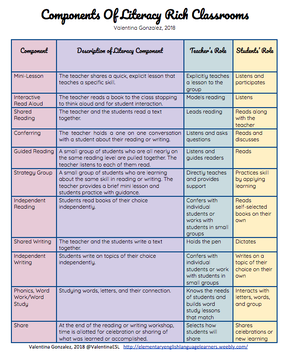





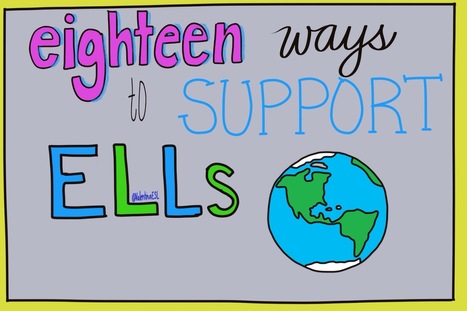

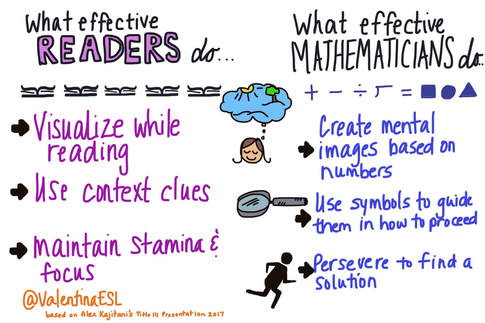

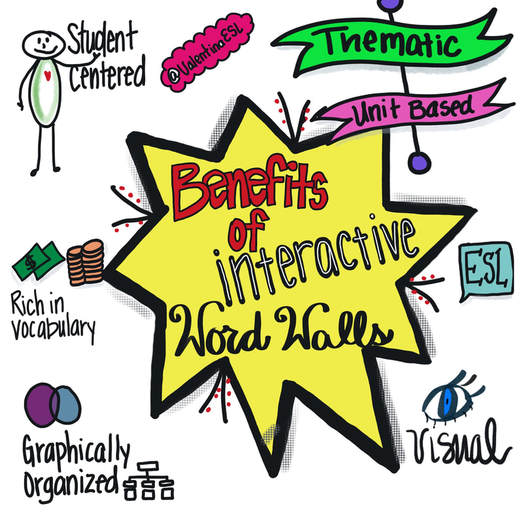

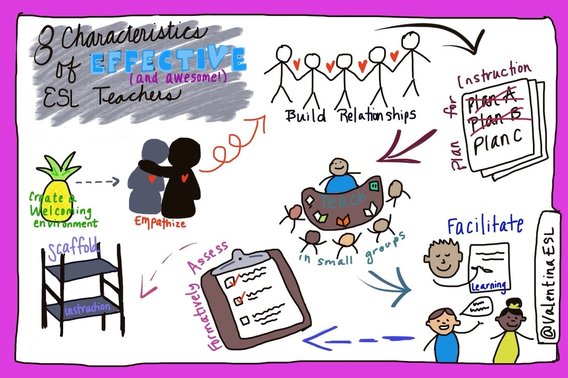

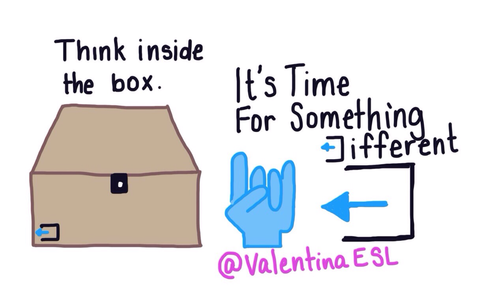

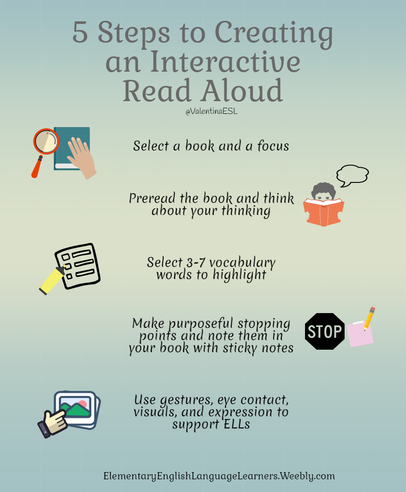
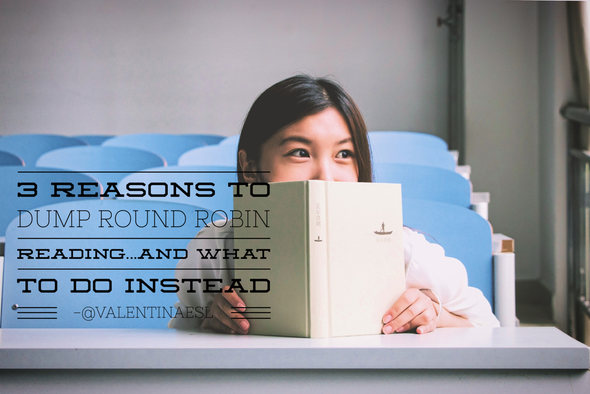

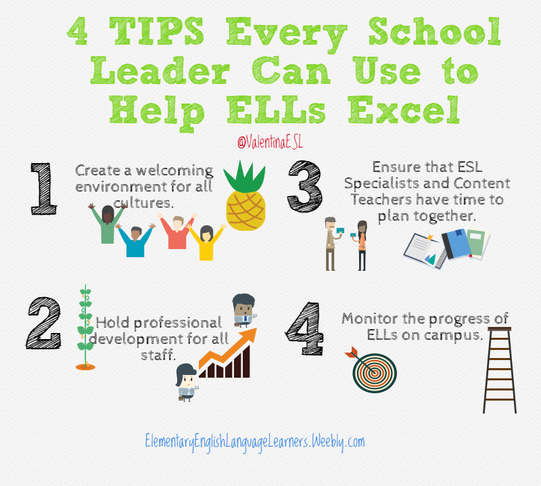




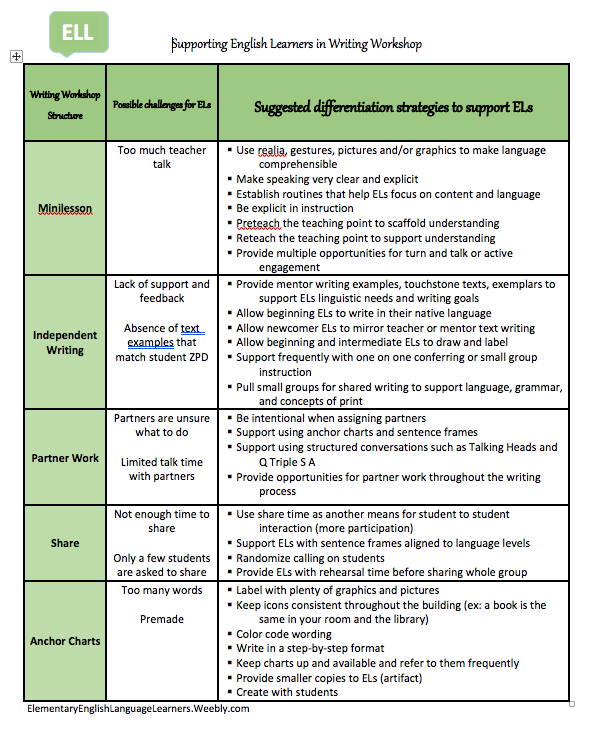


 RSS Feed
RSS Feed
